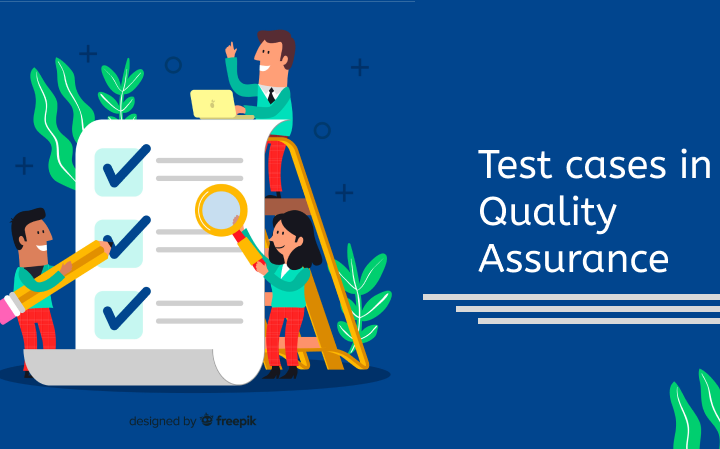Unlocking the Power of Collaboration: Exploring the Dynamic Relationship Between
Developers and Testers and Its Impact on Software Excellence
The developers and the testers are the two important entities in the process of software development. Developers are the brainstorming experts behind the applications they develop and try to make sure that everything works. Testers on the other side of the spectrum are the investigators; they meticulously check the code to make sure it meets the expectations. These two integral parts of the software development process have entirely different jobs and roles.
But do they need each other to contribute to the success of software development? Let’s try to understand the importance and impact of both working together in this blog.
The objective is to underscore the significance of developers and testers fostering a harmonious teamwork dynamic. By comprehending each other’s roles and collaborating effectively, they can collectively create exceptional software that resonates with users.
Let us understand first the roles and responsibilities of the developers and testers.
Role of a Developer
Design, Develop and Write code.
The developers are responsible for developing software applications. From designing, writing clean, efficient, and maintainable code, they form the foundation of software applications.
Efficient communication
Developers need to communicate efficiently and collaborate with stakeholders to gather and analyse requirements to get clarity in comprehending the requirements. This helps in avoiding early stages of defects in the development of software.
Testing and debugging software.
Unit testing is a crucial practice performed by software developers during the software development process. It involves testing individual units or components of the software in isolation to ensure they function correctly and meet the specified requirements.
Documenting code and technical specifications.
Documenting code and technical specifications is a best practice that enhances code quality, facilitates collaboration, and contributes to the long-term maintainability and success of software projects.
Implementing software solutions according to project timelines and specifications.
Developers should implement software solutions according to project timelines and specifications as it is essential for achieving project success, managing budget and risks, satisfying stakeholders, maintaining project momentum, adhere to compliance and Regulatory Requirements and maintaining professional standards and build trust and reputation.
Keeping up to date with industry trends and best practices.
Staying informed about industry trends and best practices is essential for developers to remain competitive, produce high-quality software, enhance productivity, and ensure long-term career success in the ever-evolving field of software development.
Key Practices for Software Development Excellence
- Participating in code reviews and providing constructive feedback.
- Troubleshooting and resolving software issues.
- Continuously improving coding skills and staying abreast of new technologies.
Role of a Tester
Software testers play a critical role in ensuring the quality, reliability, and usability of software applications by thoroughly testing functionality, identifying defects, and providing valuable feedback to improve the software development process.
Creating Test Plans
Developing comprehensive test plans that outline the testing approach, test cases, and test data to ensure thorough testing coverage.
Analyzing Requirements
Reviewing software requirements and specifications to ensure test cases align with the intended functionality and user expectations.
Executing Test Cases
Running test cases, either manually or through automated testing tools, to verify the functionality of software applications and identify defects or bugs. This includes regression tests to ensure that software changes or updates have not introduced new defects or caused unintended side effects in existing functionality.
Reporting Defects
Documenting and reporting defects found during testing using a bug tracking system, including detailed steps to reproduce the issue and any relevant information for developers to investigate and resolve the defect.
Ensuring Quality Standards and Adopting Testing Best Practices
Ensuring that software meets quality standards, performance benchmarks, and regulatory requirements through thorough testing and validation. Following established testing methodologies, best practices, and industry standards to ensure consistency, efficiency, and effectiveness in testing activities.
Continuous Learning
Staying updated on testing techniques, tools, and emerging technologies through self-study, training programs, and professional development opportunities to enhance testing skills and expertise.
Providing Feedback
Offering constructive feedback to stakeholders, including developers, project managers, and product owners, to improve software quality, efficiency, and overall development processes.
Documenting Test Results
Recording and maintaining accurate records of test results, including test execution status, defects found, and any relevant metrics or observations for future reference and analysis.
Collaboration between Developers and testers
Working closely with developers to communicate defects, clarify requirements, and validate fixes, fostering effective collaboration and resolution of issues is critical in delivering software of superior quality.
Over the years in the IT industry, it is quite apparent that the collaboration between developers and testers can efficiently identify and address issues efficiently. Their collaborative approach aids in detecting and resolving problems earlier in the development cycle, thereby enhancing overall software quality.
Let us find out how alliance between the developers and testers can be achieved.
Agile and DevOps in enhancing collaboration between Developers and Testers
Agile and DevOps methodologies provide frameworks and practices that promote collaboration between developers and testers throughout the software development lifecycle. By working together closely, teams can deliver high-quality software more efficiently and effectively.
Iterative Development
Agile and DevOps promote iterative development cycles, allowing developers and testers to collaborate continuously throughout the software development process. This iterative approach enables frequent feedback exchanges and adjustments, enhancing collaboration between the two teams.
Cross-Functional Teams
Both methodologies encourage the formation of cross-functional teams where developers and testers work together closely. This shared responsibility promotes a culture of collaboration and mutual support, leading to better communication and understanding between the teams.
Automation
Agile and DevOps emphasize automation to streamline processes and reduce manual effort. Developers and testers collaborate to automate testing procedures, enabling faster and more reliable testing cycles. This automation fosters collaboration by freeing up time for more strategic tasks and ensuring consistent testing practices across the team.
Continuous Integration and Continuous Deployment (CI/CD)
Agile and DevOps methodologies advocate for CI/CD practices, where code changes are integrated, tested, and deployed frequently. Developers and testers collaborate to ensure that automated tests are part of the CI/CD pipeline, allowing for continuous validation of code changes and early detection of issues.
Shift-Left Testing
Agile and DevOps promote “shift-left” testing, encouraging testing activities to be performed earlier in the development process. Developers and testers collaborate to define test requirements, write test cases, and perform testing activities during the development phase. This collaborative approach ensures that quality considerations are addressed from the outset, leading to fewer defects and faster feedback loops.
Feedback Loops
Both methodologies emphasize the importance of feedback loops between developers and testers. Continuous feedback exchanges allow developers to understand testing requirements and priorities better, while testers gain insights into development progress and challenges. This continuous exchange of information fosters collaboration and helps teams address issues proactively.
Shared Tools, Communication platforms and Processes
Agile and DevOps teams often use shared tools and processes to facilitate collaboration. Collaboration tools, version control systems, and communication platforms enable seamless communication and information sharing between developers and testers. This shared infrastructure promotes transparency and alignment, enhancing collaboration between the teams.
What do the Developers think about Testers?
Here are some common Misunderstandings Developers Have About Testers:
Testers are responsible only for finding bugs
Some developers may believe that the sole purpose of testers is to identify bugs in the software.
Testing is easy and anyone can do it
There may be a misconception among some developers that testing is a straightforward task that requires minimal skill or expertise.
Testers are less technical than developers
Another misconception is that testers are less technically skilled than developers. In reality, testers often possess strong technical skills, including knowledge of programming languages, automation tools, and testing frameworks.
Testing can be skipped or minimized
Some developers may underestimate the importance of testing and view it as a time-consuming or unnecessary step in the development process.
Testers slow down the development process
There may be a perception among developers that involving testers in the development process slows down progress and adds unnecessary overhead.
It’s important for developers to recognize the valuable contributions that testers make to the software development process and to foster open communication and collaboration between the two roles. By working together effectively, developers and testers can deliver high-quality software that meets user needs and exceeds expectations.
What do the Testers think about Developers?
Here are some common misunderstandings that testers may have about developers:
Developers prioritize features over quality
Testers may sometimes assume that developers prioritize adding new features to the software over ensuring its quality. While developers are indeed responsible for implementing new functionality, they also understand the importance of delivering high-quality code and addressing defects promptly.
Developers don’t understand the importance of testing
Testers may mistakenly believe that developers do not appreciate the importance of thorough testing.
Developers are resistant to feedback
Testers may perceive developers as being resistant to receiving feedback on their code or reluctant to address reported defects.
Developers don’t write testable code
Testers may assume that developers do not write code with testing in mind, making it difficult to create effective test cases.
Developers don’t understand the user perspective
Testers may believe that developers are too focused on technical details and do not fully appreciate the user perspective.
Developers underestimate the complexity of testing
Testers may think that developers underestimate the complexity of testing and the effort required to identify and address defects. While developers may not always be directly involved in testing activities, they typically understand the challenges involved and appreciate the role of testers in ensuring software quality.
It’s important for testers to recognize that developers and testers have different roles and perspectives within the software development process. By fostering open communication, collaboration, and mutual respect, developers and testers can work together effectively to deliver high-quality software that meets user needs and exceeds expectations.
Exploring the Challenges in Developer-Tester Collaboration
Lets explore on some of the challenges faced by the developers and the testers when they try to collaborate:
Communication Gaps
Differences in terminology, communication styles, and priorities can lead to misunderstandings and misinterpretations between developers and testers.
Misaligned Goals
Developers may prioritize delivering new features and meeting deadlines, while testers may prioritize ensuring software quality and reliability. Misaligned goals can lead to conflicts and tensions between the two teams, hindering collaboration and impeding progress.
Resource Constraints
Limited resources, such as time, budget, and manpower, can impact collaboration between developers and testers.
Cultural Differences
Organizational culture differences between development and testing teams can pose challenges to collaboration. Different work styles, attitudes towards risk, and approaches to problem-solving may create barriers to effective teamwork and cooperation.
Tooling and Environment Issues
Incompatibility or lack of integration between development and testing tools and environments can impede collaboration. Misaligned tooling may result in inefficient workflows, data discrepancies, and challenges in sharing information and artifacts between teams.
Lack of Trust and Respect
Mutual trust and respect between developers and testers are essential for effective collaboration. Negative perceptions, stereotypes, or past experiences may erode trust and create barriers to open communication, cooperation, and shared problem-solving.
Blame Culture
A blame culture, where individuals are held accountable for errors or failures, can undermine collaboration between developers and testers. Fear of criticism or repercussions may discourage team members from sharing information, admitting mistakes, or seeking help, leading to unresolved issues and degraded teamwork.
Addressing and overcoming the challenges
Addressing these challenges requires proactive efforts from both developers and testers to foster a collaborative and supportive working environment. Strategies such as promoting open communication, aligning goals and priorities, investing in training and skill development, and fostering a culture of mutual respect and trust can help overcome collaboration challenges and enhance teamwork between developers and testers.
Fostering Strong Developer-Tester Relationship
A strong developer-tester relationship is essential for delivering high-quality software products efficiently and effectively. By fostering collaboration, communication, and mutual respect, teams can achieve greater success and drive innovation in their projects. This may yield following results:
Enhanced Software Quality
If Testers provide valuable feedback to developers, helping them identify and address defects early in the development process, this collaboration between developers and testers results in better-quality software.
Faster Time to Market
Testers work closely with developers to validate code changes and ensure they meet quality standards. By catching and resolving issues early, teams can accelerate the release cycle and bring new features to market more quickly.
Reduced Rework and Costs
By detecting and addressing defects early, teams can avoid the time and resources associated with fixing issues after deployment. This leads to cost savings and more efficient use of resources.
Improved Communication and Collaboration
A strong relationship between developers and testers can help teams share knowledge, ideas, and best practices, leading to a deeper understanding of project requirements and objectives. This collaborative environment encourages teamwork and collective problem-solving, driving project success.
Increased Productivity and Efficiency
Developers and testers work together to streamline processes, automate repetitive tasks, and optimize workflows. This results in faster development cycles, reduced manual effort, and improved overall efficiency.
Higher Employee Satisfaction
When developers and testers work together harmoniously, they feel valued, supported, and respected. This positive work environment fosters job satisfaction, engagement, and retention within the team.
Continuous Learning and Growth
Team members share insights, experiences, and feedback, helping each other develop new skills and expand their knowledge. This culture of learning and development benefits individual team members and the organization as a whole.
Best practices can enhance collaboration between developers and testers
Early Involvement
Involve testers in the project from the early stages of development. This allows testers to gain a thorough understanding of project requirements, design decisions, and implementation details, enabling them to create more effective test plans and strategies.
Shared Goals and Objectives
Ensure that developers and testers have a shared understanding of project goals, objectives, and priorities. Aligning goals promotes teamwork, reduces conflicts, and fosters a collaborative working environment.
Open Communication
Encourage open and transparent communication between developers and testers. Establish channels for sharing information, feedback, and updates regularly. Clear communication helps clarify expectations, resolve misunderstandings, and address issues promptly.
Collaborative Planning
Collaborate on test planning activities to ensure comprehensive test coverage and efficient use of resources. Developers and testers should work together to identify test scenarios, prioritize testing efforts, and allocate resources effectively.
Continuous Feedback Loop
Establish a continuous feedback loop between developers and testers to exchange insights, observations, and recommendations throughout the development lifecycle. Regular feedback sessions promote learning, collaboration, and continuous improvement for both teams.
By implementing these best practices, organizations can foster a culture of collaboration, teamwork, and shared responsibility between developers and testers, leading to more effective software development outcomes and enhanced customer satisfaction.



